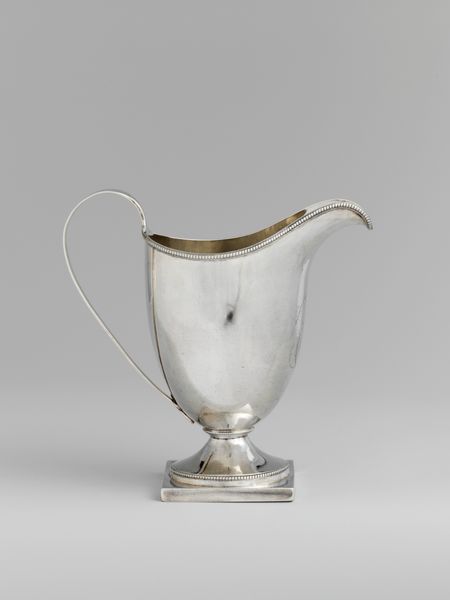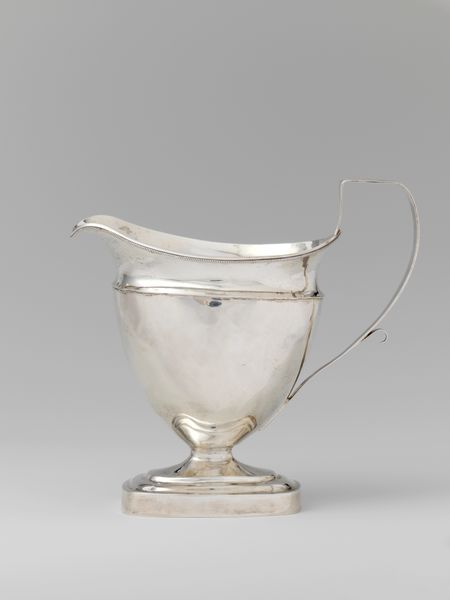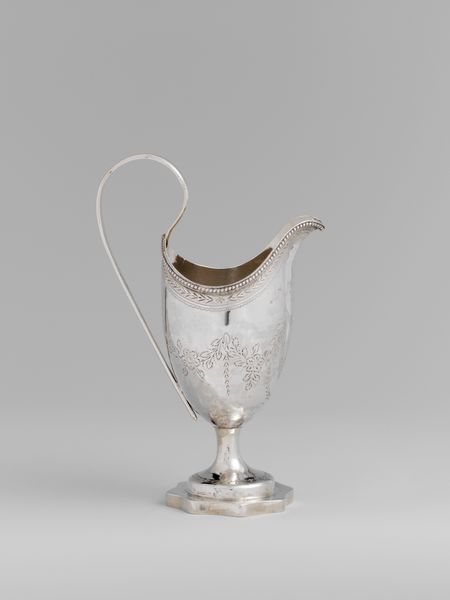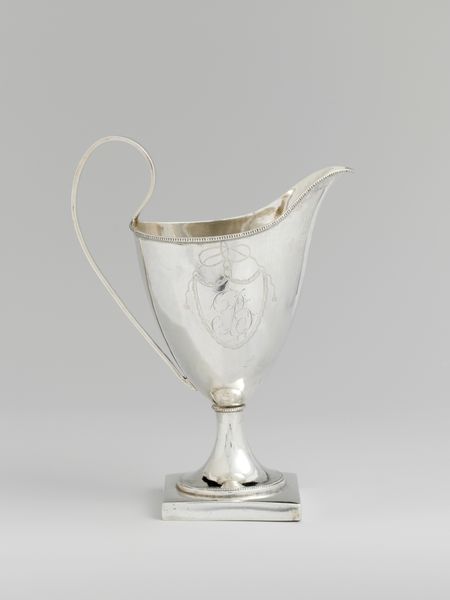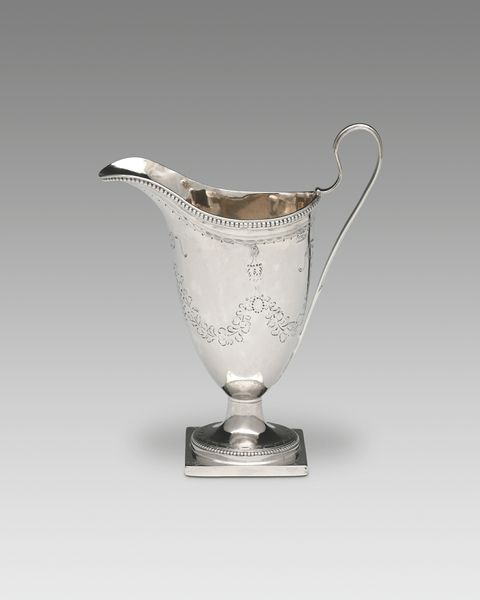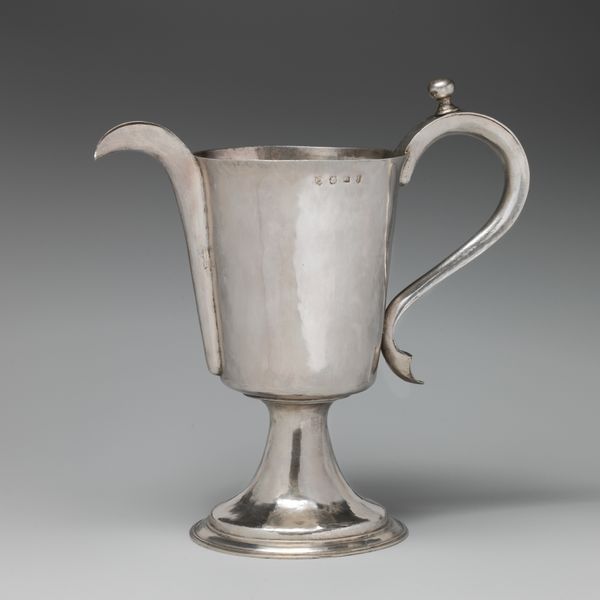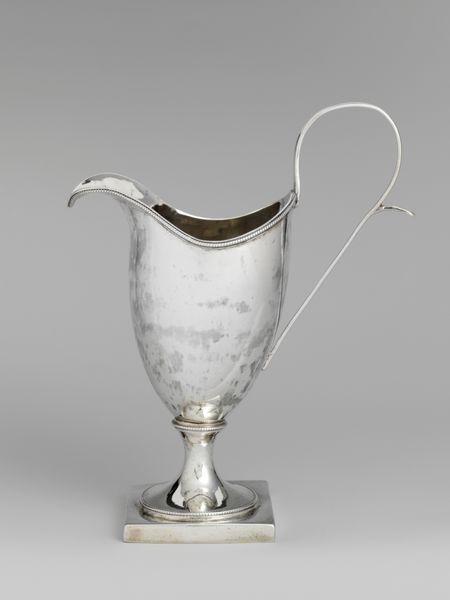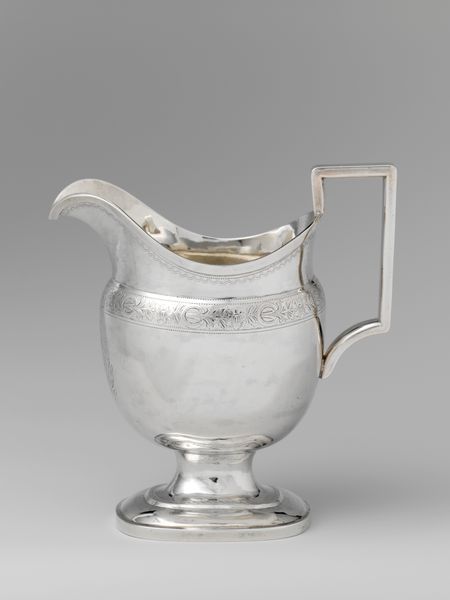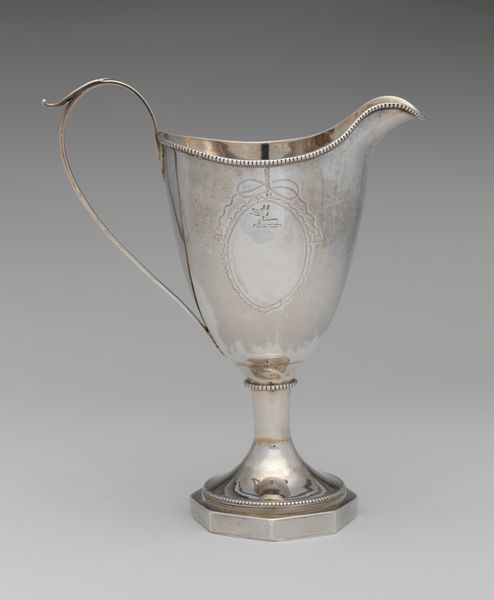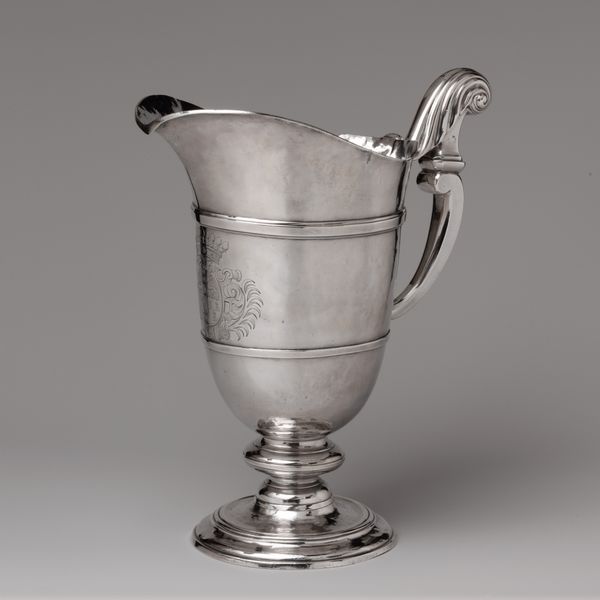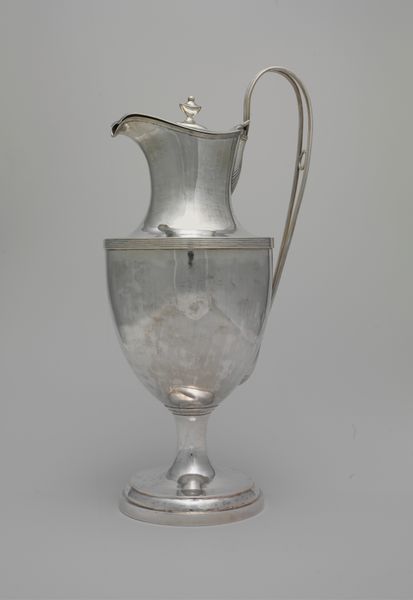
silver, photography
#
neoclacissism
#
still-life-photography
#
silver
#
photography
Dimensions: Overall: 6 x 5 in. (15.2 x 12.7 cm); 7 oz. (218.1 g) Foot: 2 5/16 x 2 5/16 in. (5.9 x 5.9 cm)
Copyright: Public Domain
Editor: Here we have an object called "Creampot," made sometime between 1775 and 1800, a piece of silver currently housed at the Metropolitan Museum of Art. I’m struck by its elegant simplicity and how it feels very...staged, even in this photographic representation. What’s your read on this object? Curator: The creampot, simple as it seems, is a fascinating window into late 18th-century society. It speaks to the rise of new dining rituals and a growing emphasis on refined domestic life among the burgeoning middle and upper classes. How do you think objects like these contribute to social hierarchies? Editor: That's interesting. I guess owning such a piece indicated a certain level of wealth and sophistication, right? It's not just a functional object; it's a status symbol. Curator: Precisely! Silverware like this wasn't just about serving cream. It was about projecting an image. Neoclassical design, seen here in the pot’s clean lines and symmetrical form, was directly linked to the Enlightenment ideals of reason and order. This aesthetic conveyed power and taste, influencing perceptions of its owner. The museum itself, by displaying it, continues this dialogue, wouldn’t you say? Editor: Absolutely. The act of displaying it elevates it further, almost enshrining those historical values and connecting them to a contemporary audience. Does the photographic rendering do something similar? Curator: Indeed. By photographing it like this, it becomes further distanced from everyday use and closer to art, highlighting the evolving role of the object as a cultural artifact, its inherent social value multiplied by both the museum’s context and that of photography. How do you perceive the relationship between the physical object and its representation? Editor: I see what you mean. The photo aestheticizes it, while the object's history infuses it with meaning. Both add to its story. Curator: Exactly! Examining something as seemingly straightforward as a creampot reveals the intricate interplay between art, society, and the institutions that shape our understanding of both. Editor: This really changed my perspective. Thanks, I have a lot more to think about now.
Comments
No comments
Be the first to comment and join the conversation on the ultimate creative platform.
